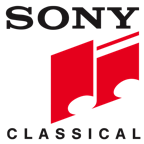Sight-Reading
Purpose of the Course
This course is designed to help you overcome the intimidation and complexity of sight-reading. Through a combination of lectures, exercises, and practical assignments, you will learn the key skills and techniques necessary to master the art of sight-reading.
Sight-reading is the ability to read and play music on the piano without prior practice or preparation. It is a critical skill for pianists, as it allows them to perform new pieces of music with ease and confidence. However, many people find sight-reading to be a daunting task, as it requires a high level of musical literacy and technical proficiency.
In this course, we will cover a wide range of topics to help you improve your sight-reading skills. We will begin by discussing the basics of music notation, including note values, key signatures, and time signatures. We will then move on to more advanced concepts, such as rhythm, melody, and harmony. Along the way, we will also cover various strategies and techniques for improving your sight-reading skills, such as using a metronome, practicing with a partner, and developing a strong sense of rhythm.
Throughout the course, you will have the opportunity to practice and apply what you have learned through a variety of exercises and assignments. You will also have the opportunity to receive feedback and guidance from the instructor. By the end of the course, you will have a solid understanding of the principles and techniques of sight-reading, and you will be well on your way to mastering this essential skill.
So, whether you are a beginner pianist looking to improve your sight-reading skills, or an experienced pianist looking to refine your technique, this course is for you. We look forward to working with you and helping you achieve your goals.
Sight-reading is the ability to read and play music on the piano without prior practice or preparation. It is a critical skill for pianists, as it allows them to perform new pieces of music with ease and confidence. However, many people find sight-reading to be a daunting task, as it requires a high level of musical literacy and technical proficiency.
In this course, we will cover a wide range of topics to help you improve your sight-reading skills. We will begin by discussing the basics of music notation, including note values, key signatures, and time signatures. We will then move on to more advanced concepts, such as rhythm, melody, and harmony. Along the way, we will also cover various strategies and techniques for improving your sight-reading skills, such as using a metronome, practicing with a partner, and developing a strong sense of rhythm.
Throughout the course, you will have the opportunity to practice and apply what you have learned through a variety of exercises and assignments. You will also have the opportunity to receive feedback and guidance from the instructor. By the end of the course, you will have a solid understanding of the principles and techniques of sight-reading, and you will be well on your way to mastering this essential skill.
So, whether you are a beginner pianist looking to improve your sight-reading skills, or an experienced pianist looking to refine your technique, this course is for you. We look forward to working with you and helping you achieve your goals.
Required Materials
Materials Required for Piano Sight-Reading:
1 A piano or keyboard: You will need access to a piano or keyboard in order to complete the exercises and assignments in this course.
2 Music notation software: It is recommended that you have access to a music notation software such as Finale or Sibelius. This will help you to better understand the notation and notation symbols used in the course.
3 A metronome: A metronome is an essential tool for improving your rhythm and timing. You will need access to a metronome during the course to practice and develop your sight-reading skills.
4 Sight-reading books: The course will be using the following books:
• "Sight-Reading for the Classical Pianist" by Robert Benedict
• "The Complete Sight-Reading Book for Piano" by David Dutkanicz
5 Notebook and pen: You will need to take notes during the lectures and exercises in the course. A notebook and pen will be necessary for this purpose.
6 A reliable internet connection: Some of the material for the course will be available through the Learning Management System. So, you will need a reliable internet connection to access this material.
All materials are mandatory for the course and will be used through the semester. It is important to have all the materials ready before the start of the course. The instructor will provide additional information on how to access the materials and how they will be used throughout the course.
1 A piano or keyboard: You will need access to a piano or keyboard in order to complete the exercises and assignments in this course.
2 Music notation software: It is recommended that you have access to a music notation software such as Finale or Sibelius. This will help you to better understand the notation and notation symbols used in the course.
3 A metronome: A metronome is an essential tool for improving your rhythm and timing. You will need access to a metronome during the course to practice and develop your sight-reading skills.
4 Sight-reading books: The course will be using the following books:
• "Sight-Reading for the Classical Pianist" by Robert Benedict
• "The Complete Sight-Reading Book for Piano" by David Dutkanicz
5 Notebook and pen: You will need to take notes during the lectures and exercises in the course. A notebook and pen will be necessary for this purpose.
6 A reliable internet connection: Some of the material for the course will be available through the Learning Management System. So, you will need a reliable internet connection to access this material.
All materials are mandatory for the course and will be used through the semester. It is important to have all the materials ready before the start of the course. The instructor will provide additional information on how to access the materials and how they will be used throughout the course.
Program Learning Outcome
1 Understanding of basic music notation: Upon completion of this course, students will have a solid understanding of the basics of music notation, including note values, key signatures, and time signatures.
2 Development of sight-reading skills: Students will develop their sight-reading skills through a variety of exercises and assignments, which will enable them to read and play new pieces of music with ease and confidence.
3 Mastery of rhythm and timing: Students will learn how to use a metronome and other techniques to improve their rhythm and timing, which will enable them to play with greater precision and accuracy.
4 Understanding of melody and harmony: Students will gain an understanding of the principles of melody and harmony, which will enable them to play with greater musicality and expression.
5 Ability to analyze and interpret music: Students will learn how to analyze and interpret music, which will enable them to play with greater understanding and insight.
6 Improved performance skills: Students will develop the ability to perform new pieces of music with greater ease, confidence, and precision.
By the end of this course, students will have acquired the necessary skills and techniques to sight-read and perform new pieces of music on the piano with confidence and proficiency. They will also have a deeper understanding of music theory and notation which will help them to have a better comprehension of the music and improve their overall musicianship.
2 Development of sight-reading skills: Students will develop their sight-reading skills through a variety of exercises and assignments, which will enable them to read and play new pieces of music with ease and confidence.
3 Mastery of rhythm and timing: Students will learn how to use a metronome and other techniques to improve their rhythm and timing, which will enable them to play with greater precision and accuracy.
4 Understanding of melody and harmony: Students will gain an understanding of the principles of melody and harmony, which will enable them to play with greater musicality and expression.
5 Ability to analyze and interpret music: Students will learn how to analyze and interpret music, which will enable them to play with greater understanding and insight.
6 Improved performance skills: Students will develop the ability to perform new pieces of music with greater ease, confidence, and precision.
By the end of this course, students will have acquired the necessary skills and techniques to sight-read and perform new pieces of music on the piano with confidence and proficiency. They will also have a deeper understanding of music theory and notation which will help them to have a better comprehension of the music and improve their overall musicianship.
Course Schedule
Week 1: Introduction to Sight-Reading - Basics of music notation, including note values, key signatures, and time signatures.
Week 2: Sight-Reading for Beginners - Introduction to basic sight-reading exercises and techniques.
Week 3: Reading Rhythms - Understanding the importance of rhythm in sight-reading and practicing exercises to improve rhythm skills.
Week 4: Sight-Reading with a Metronome - Using a metronome to improve timing and precision in sight-reading.
Week 5: Reading Melodies - Understanding the principles of melody and practicing exercises to improve melody sight-reading skills.
Week 6: Reading Harmony - Understanding the principles of harmony and practicing exercises to improve harmony sight-reading skills.
Week 7: Sight-Reading with a Partner - Practicing sight-reading with a partner to improve accuracy and confidence.
Week 8: Mid-term exam
Week 9: Advanced Sight-Reading Techniques - Learning advanced techniques for sight-reading and practicing exercises to improve skills.
Week 10: Analyzing and Interpreting Music - Learning how to analyze and interpret music to improve sight-reading skills.
Week 11: Sight-Reading for Performance - Preparing for performance by practicing sight-reading skills.
Week 12: Sight-Reading for Auditions - Preparing for auditions by practicing sight-reading skills.
Week 13: Review and Practice - Reviewing material covered in the course and practicing exercises to improve sight-reading skills.
Week 14: Final exam
Note: This schedule is subject to change based on the instructor's discretion. Additional lectures, practices, and exercises may be added as necessary. Homework assignments, quizzes and practical assignments will be given throughout the course and are expected to be completed before the next class.
Week 2: Sight-Reading for Beginners - Introduction to basic sight-reading exercises and techniques.
Week 3: Reading Rhythms - Understanding the importance of rhythm in sight-reading and practicing exercises to improve rhythm skills.
Week 4: Sight-Reading with a Metronome - Using a metronome to improve timing and precision in sight-reading.
Week 5: Reading Melodies - Understanding the principles of melody and practicing exercises to improve melody sight-reading skills.
Week 6: Reading Harmony - Understanding the principles of harmony and practicing exercises to improve harmony sight-reading skills.
Week 7: Sight-Reading with a Partner - Practicing sight-reading with a partner to improve accuracy and confidence.
Week 8: Mid-term exam
Week 9: Advanced Sight-Reading Techniques - Learning advanced techniques for sight-reading and practicing exercises to improve skills.
Week 10: Analyzing and Interpreting Music - Learning how to analyze and interpret music to improve sight-reading skills.
Week 11: Sight-Reading for Performance - Preparing for performance by practicing sight-reading skills.
Week 12: Sight-Reading for Auditions - Preparing for auditions by practicing sight-reading skills.
Week 13: Review and Practice - Reviewing material covered in the course and practicing exercises to improve sight-reading skills.
Week 14: Final exam
Note: This schedule is subject to change based on the instructor's discretion. Additional lectures, practices, and exercises may be added as necessary. Homework assignments, quizzes and practical assignments will be given throughout the course and are expected to be completed before the next class.

Follow me on Spotify

Archie Chen records for Sony Classical
Supported by:




